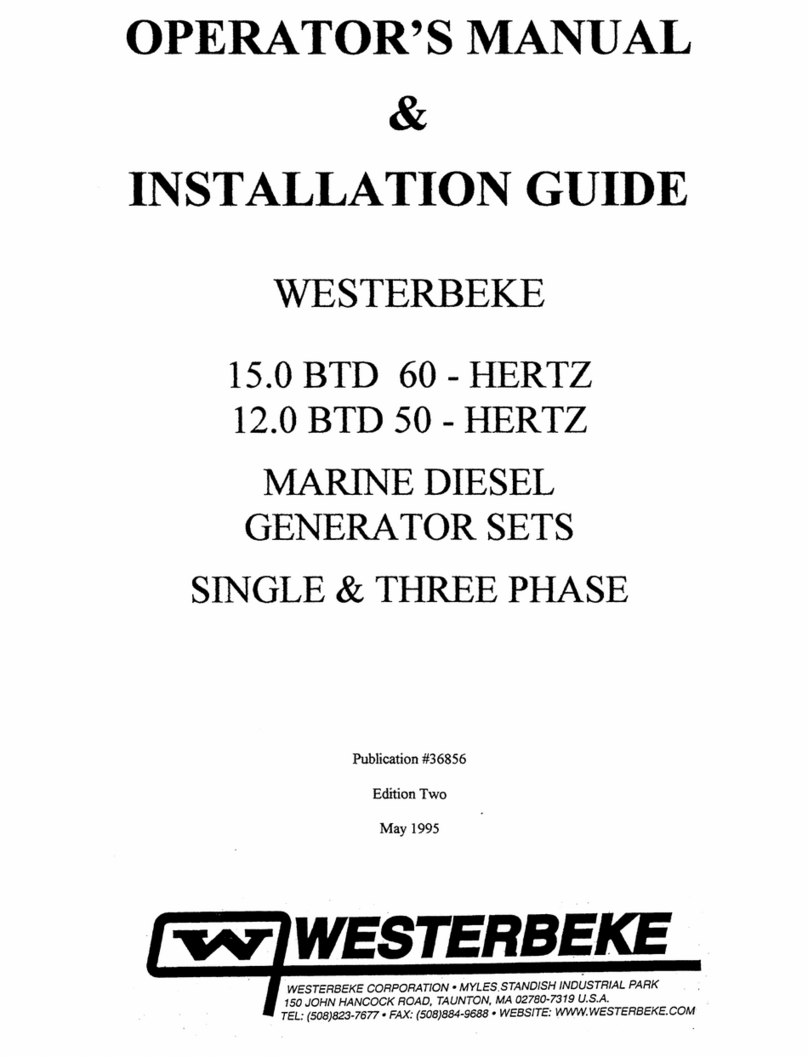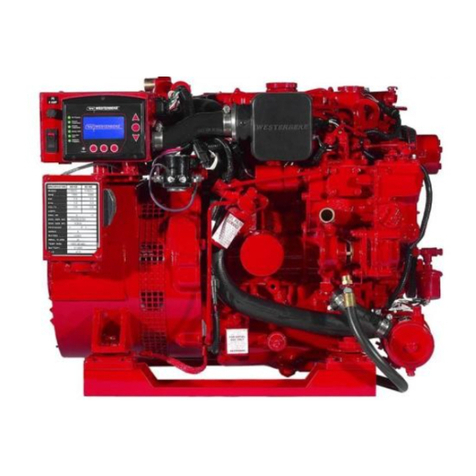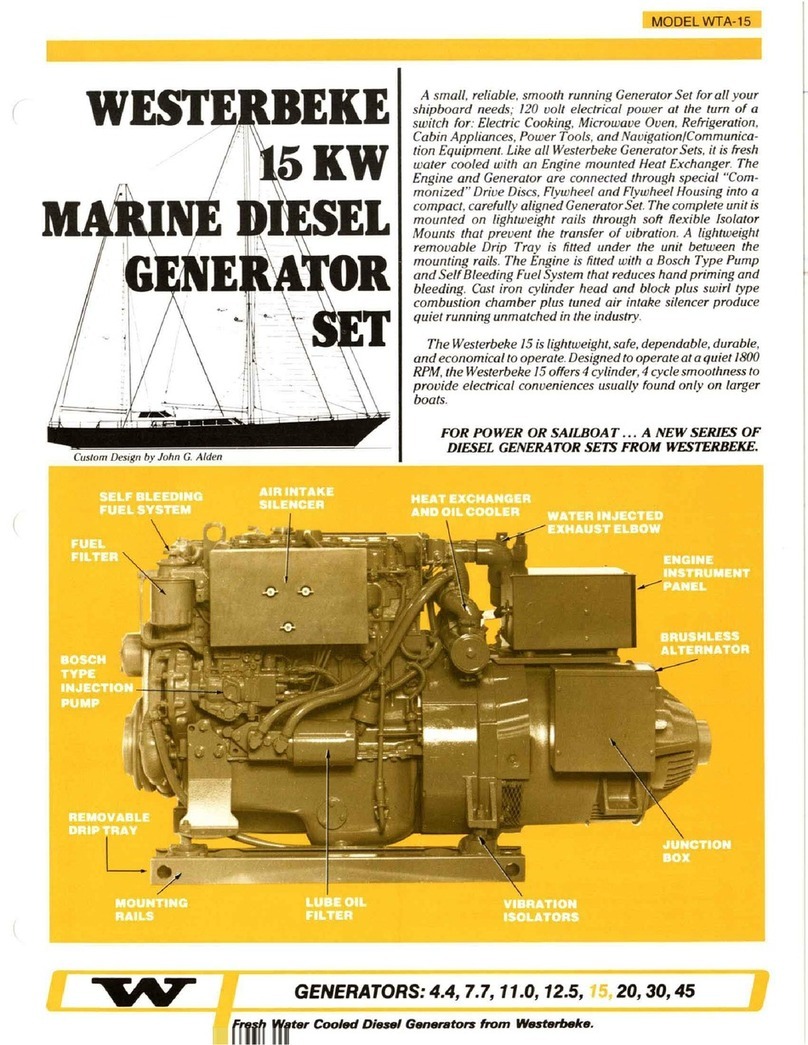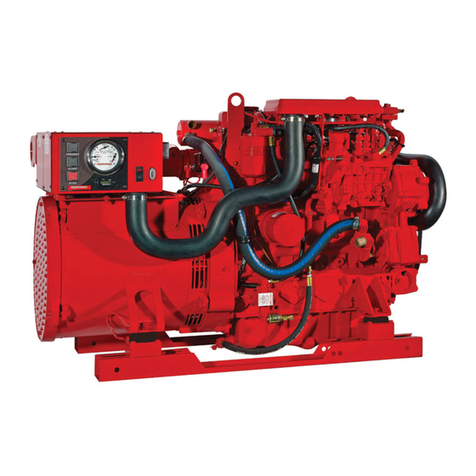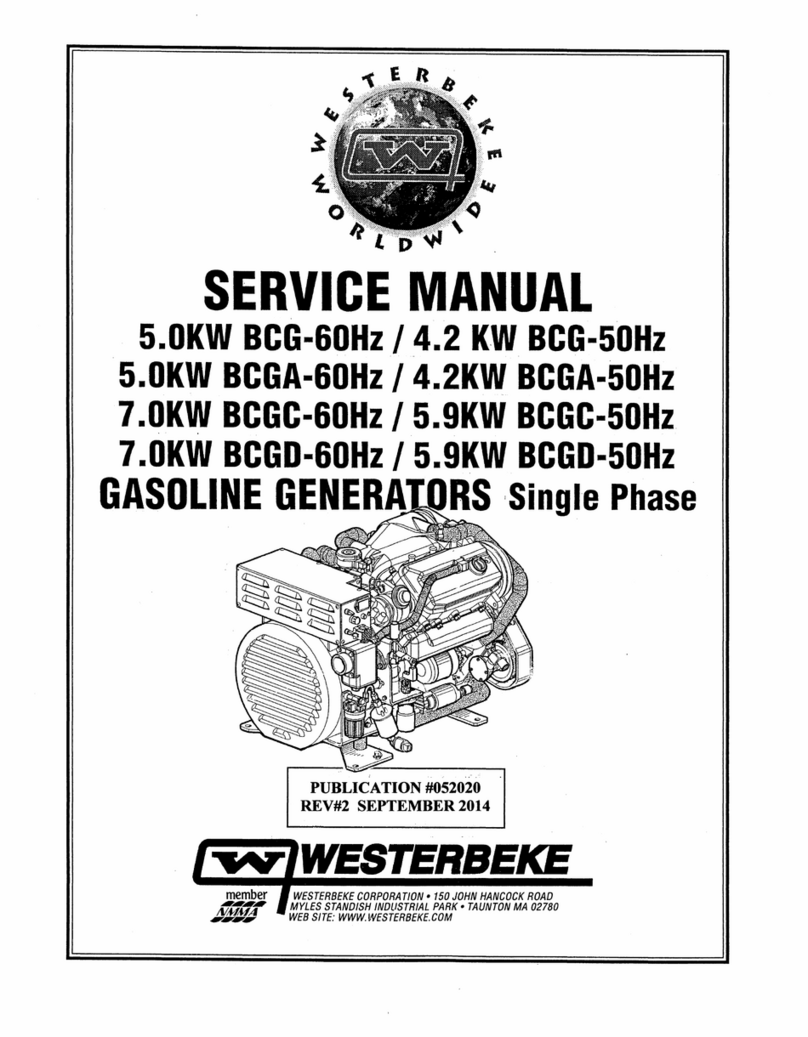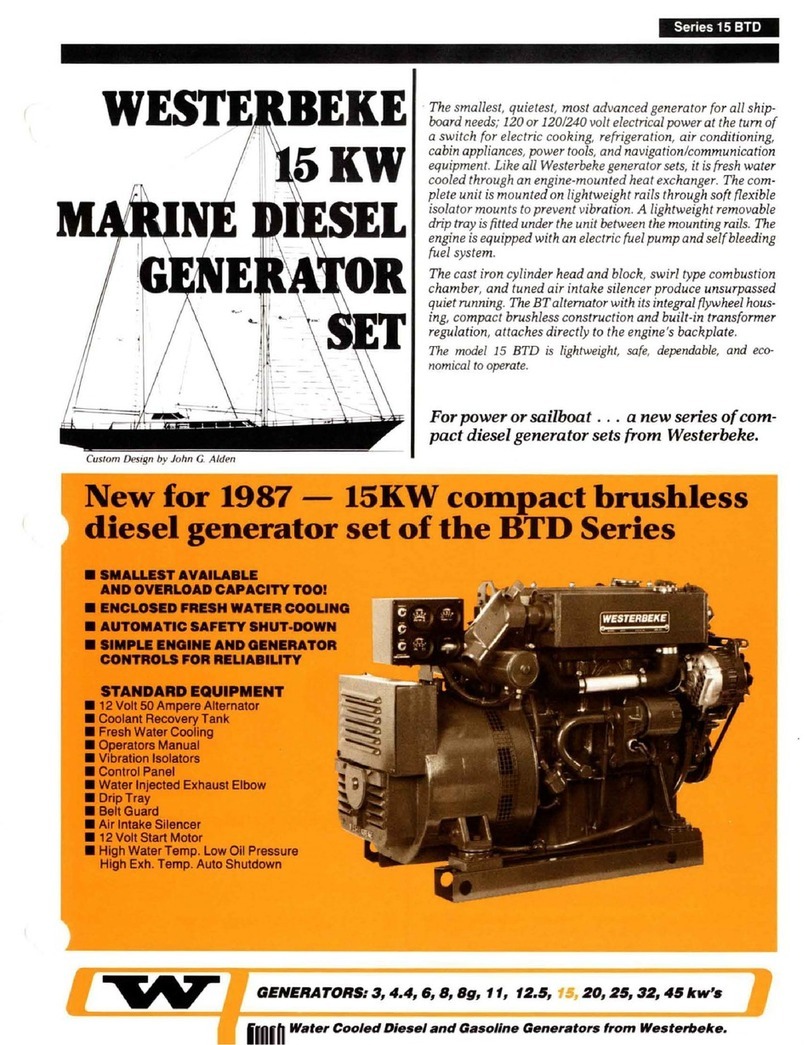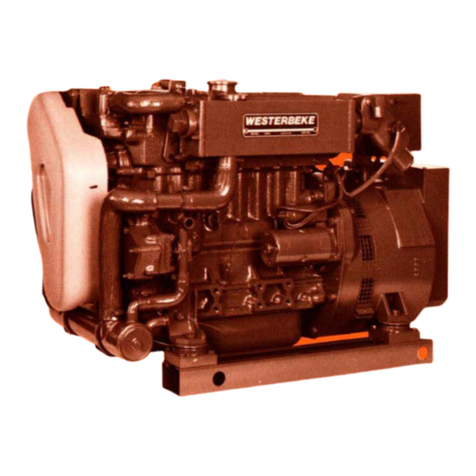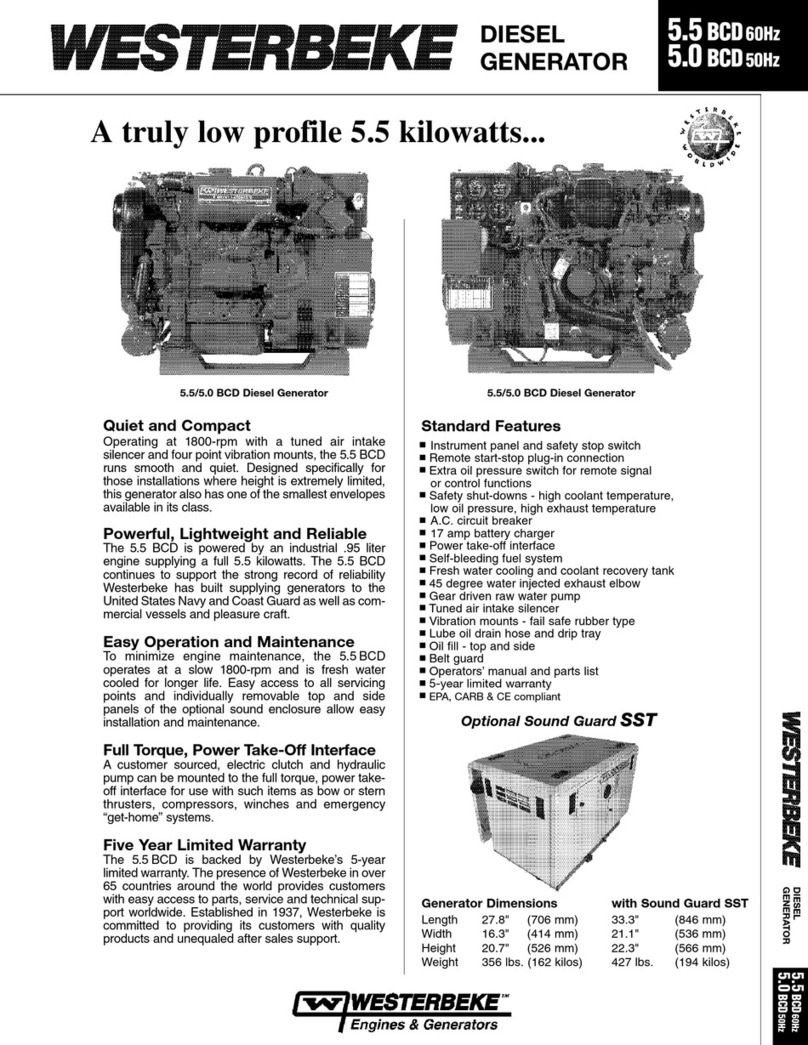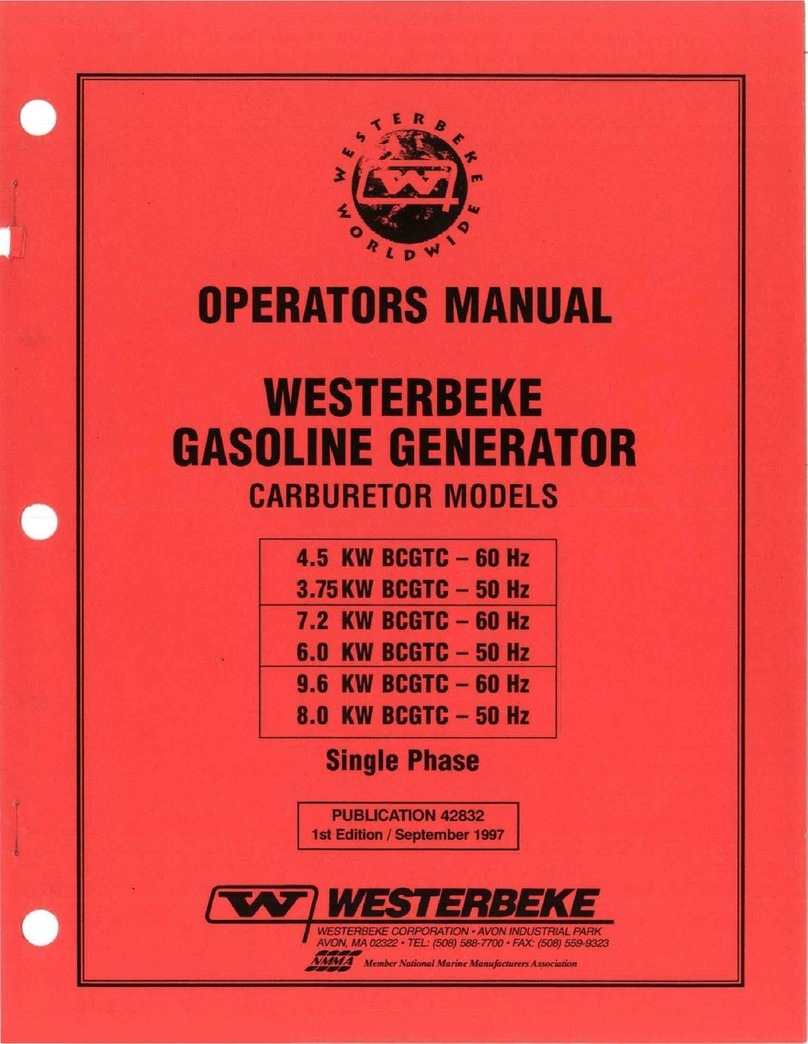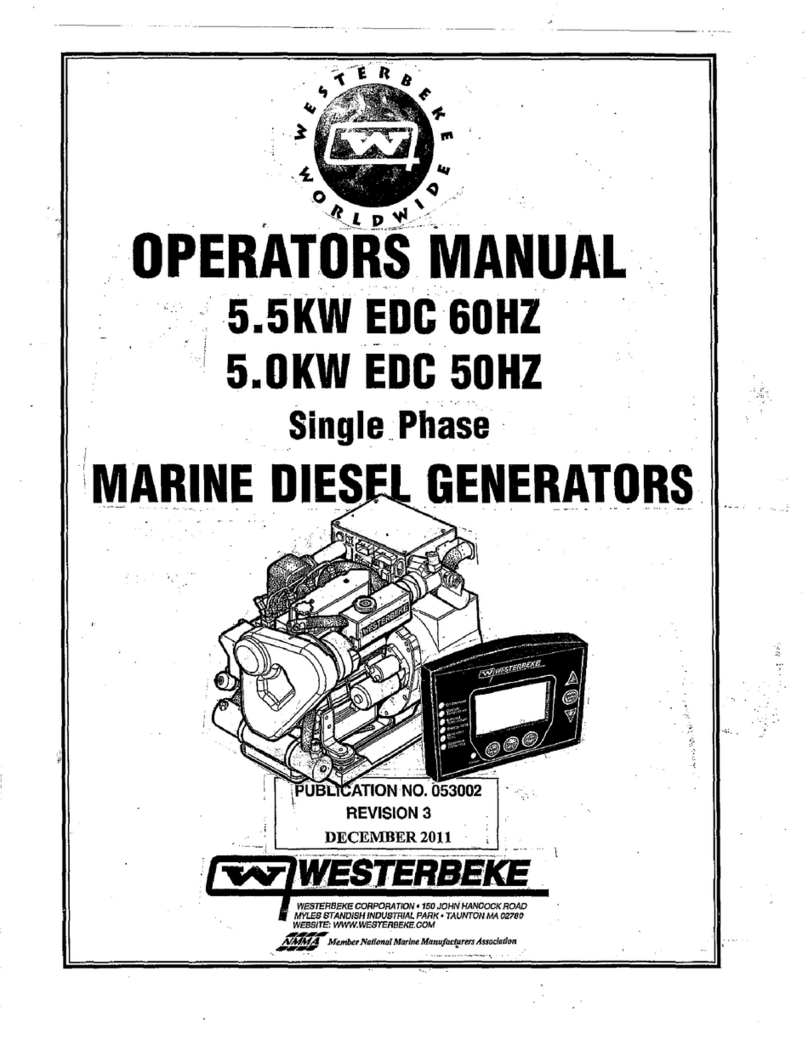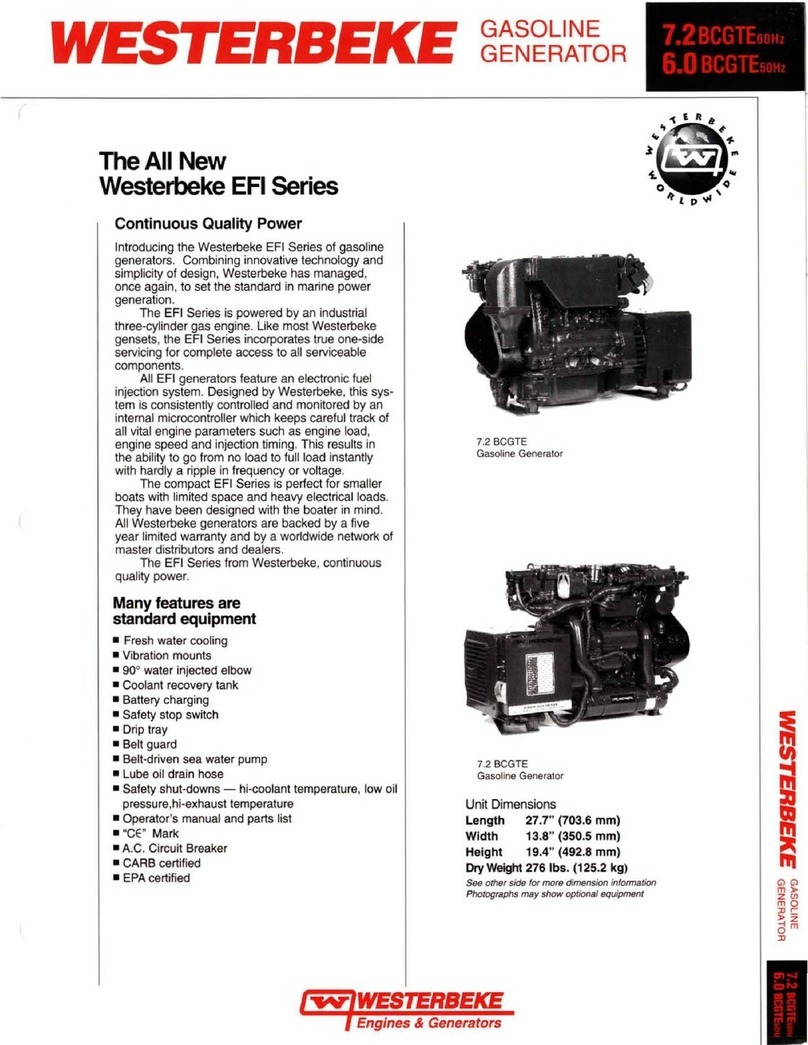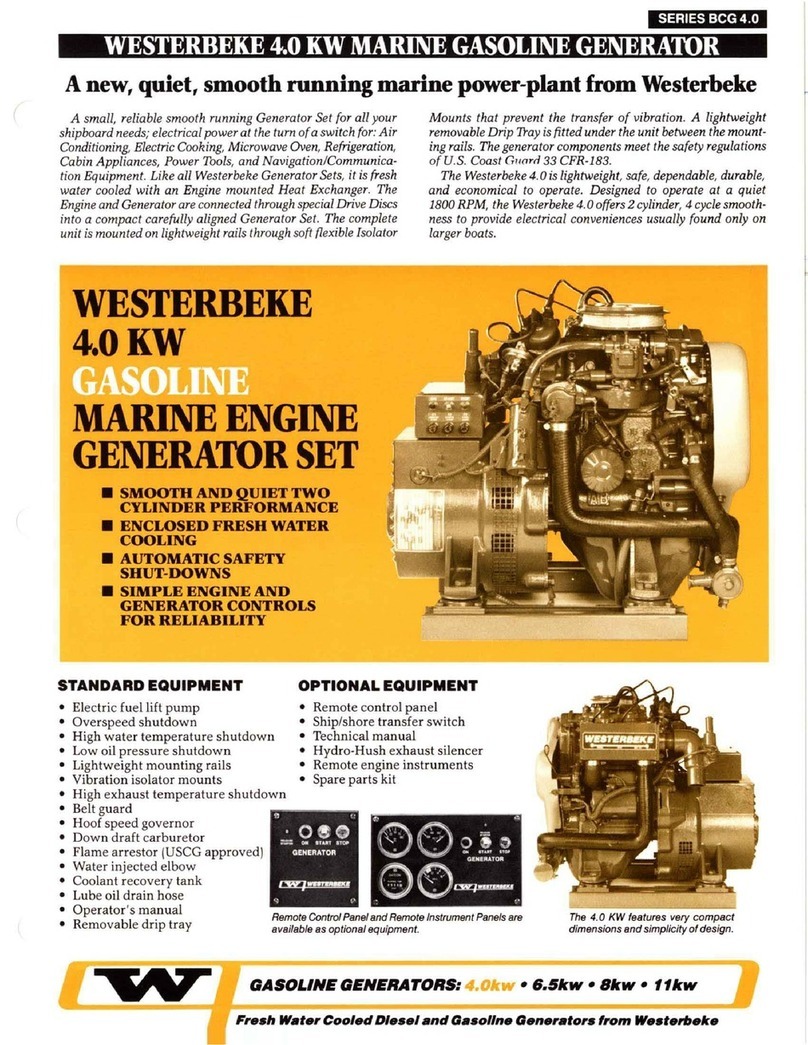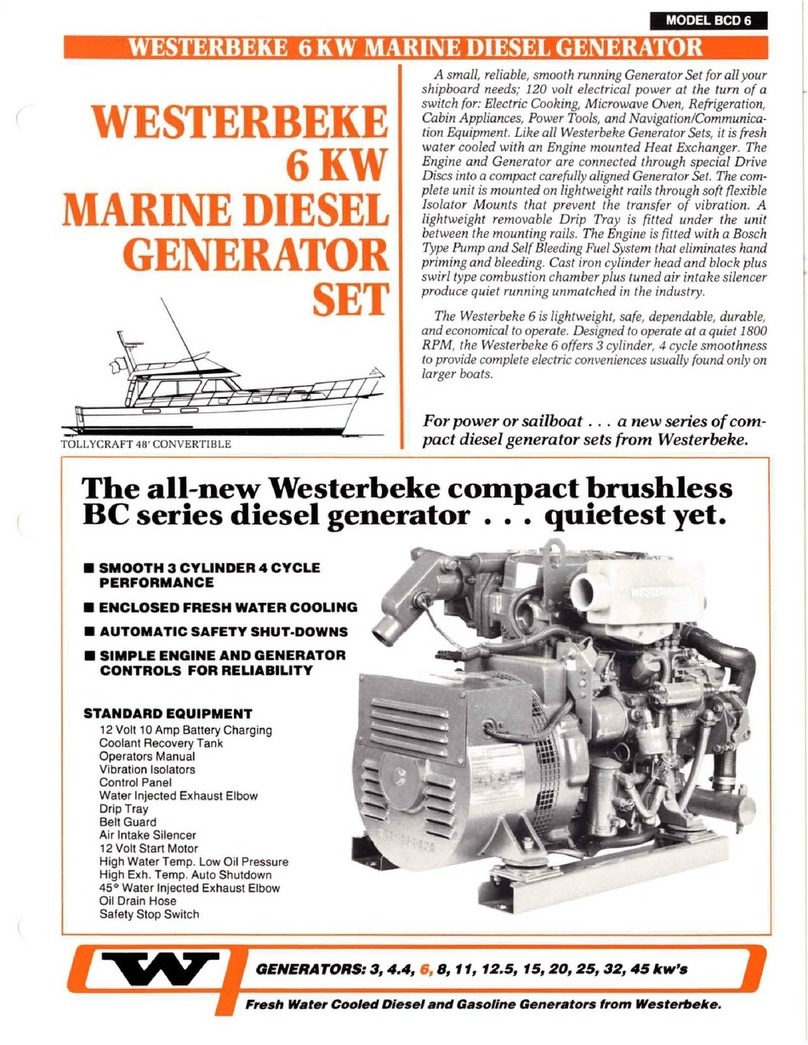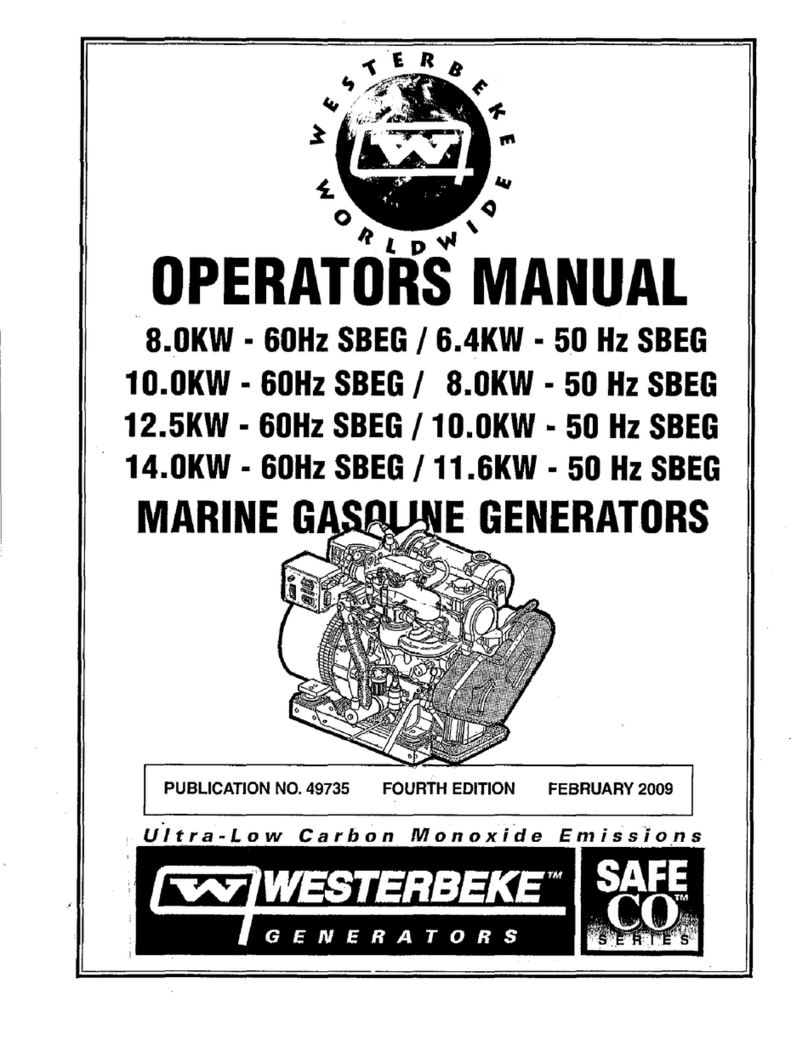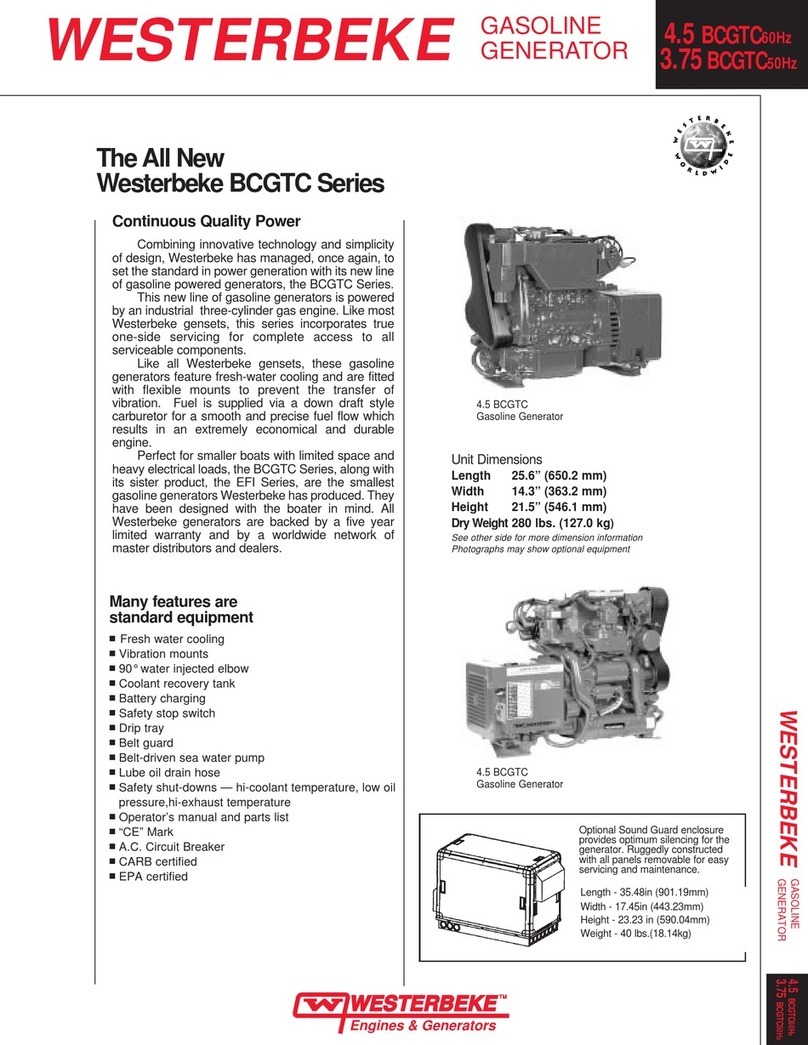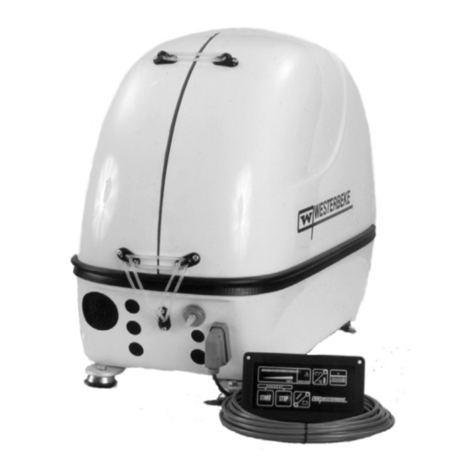
SAFETY PRECAUTIONS
The following symbols appear in this manual
to
call attention
to
and emphasize conditions potentially dangerous
to
the
operator.
IWARNINGI
The above symbol is used in the manual
to
warn
of
possible
serious personal injury orloss
of
life.
CAUTION
The above symbol is used in the manual
to
caution personnel
of
possible damage
to
equipment.
Read
the manual carefully and thoroughly before attempting
to operate the equipment. Know when dangerous conditions
can exist and take necessary precautions
to
protect personnel
and equipment.
Fuels, exhaust gases, batteries, electrical equipment, and
moving and hotparts are potential hazardsthat could result in
serious personal injuryor death. Follow recommended proce-
dures carefully.
Always operate bilge blowers for at least five minutes before
startingagasoline-fueledenginej ensurenogasolinefumesare
present before starting.
•
Prevent
Electric Shock
Shut
off
electric power before accessing electrical equip-
ment.
Use
insulated matswheneverworking on electrical equip-
ment.
Make sure your clothing is dry, not
damp
(particularly
shoes), and keep your skin surfaces
dry
when handling
electrical equipment.
Remove wristwatch and jewelrywhen working on electri-
cal equipment.
Do
notconnect utilityshore power tovessel's AC circuits,
except through a ship-to-shore double-throw transfer
switch. Damagetovessel's
AC
generator mayresult
if
this
is not done.
Be
extremely careful when working on electrical com-
ponents. High voltage can cause injury or death.
• Exhaust Gases Are Toxic
Ensurethattheexhaustsystem isadequatetoexpel gases
discharged
from
the engine. Check exhaust system
regularly for leaks and make sure the exhaust manifolds
are securelyattached and no warping exists.
Be
sure the unitand its surroundings are well-ventilated.
• Use Extreme Care When Handling Engine Fuel
(A
constant danger ofexplosion
or
fire exists)
Do
notfill fuel tank(s) while the engine is running.
Do
notsmokeoruse
an
open flame neartheengineorthe
fuel tank.
•
po
Not
Alter
or
Modify
the
Fuel System
Be
sure all fuel supplies have a positive shut-off valve.
Be
certain fuel line fittings are adequatelytightened and
free
of
leaks.
Make sure a fire extinguisher is installed nearby and is
properly maintained.
Be
familiar with its proper use.
ex-
tinguishers rated ABC
by
the NFPA are appropriate for all
applications encountered in this environment.
• Use Extreme Care When Servicing Batteries
Wear rubber gloves, a rubber apron, and eye protection
when servicing batteries.
Leadacidbatteriesemithydrogen,ahighly-explosivegas,
which can
be
ignited
by
electrical arcing
or
by
a lighted
cigarette, cigar, or pipe.
Do
not smoke or allow an open
flame nearthe battery being serviced. Shut off all electri-
cal equipment in the vicinity
to
prevent electrical arcing
during servicing.
• Ayoid Moving parts
Do
notservice the unitwhile the unitis runningj
if
a situa-
tion arises in which
it
is absolutely necessary
to
make
operating adjustments, use extremecare
to
avoid moving
parts and hotexhaust system components.
Do
not
wear loose clothing or jewelry when servicing
equipmentj avoid wearing loose jackets, shirts orsleeves,
rings, necklaces, or bracelets that
might
be caught in
moving parts.
Make sure all attaching hardware is properly tightened.
Keep protective shields and guards in their respective
place atall times.
Do
not check fluid levels or the drive-belt's tension while
the unitisoperating.
Do
notworkon the equipmentwhen mentallyorphysical-
ly
incapacitated
by
fatigue.
